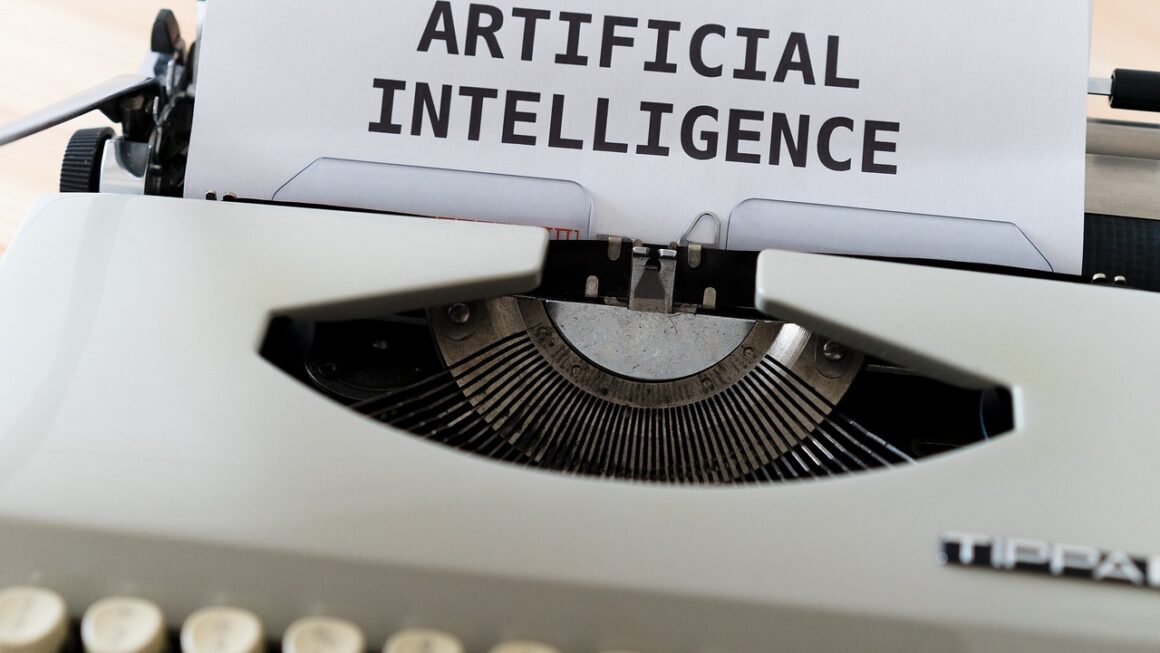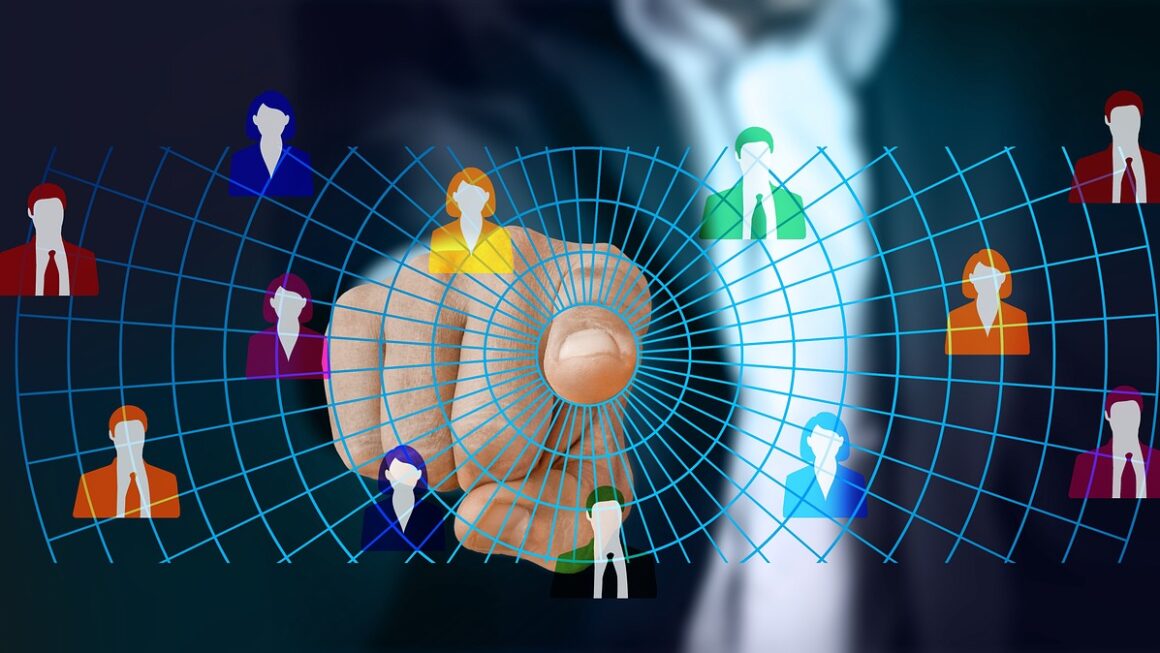Imagine a world where robots aren’t just pre-programmed machines repeating tasks, but intelligent collaborators that learn, adapt, and solve complex problems alongside humans. This future is rapidly becoming a reality thanks to the exciting convergence of artificial intelligence (AI) and robotics. AI robotics is transforming industries, unlocking new possibilities, and revolutionizing the way we live and work. This blog post delves into the core concepts, applications, and future potential of this groundbreaking field.
Understanding AI Robotics
AI robotics is the intersection of two powerful fields: artificial intelligence and robotics. It involves integrating AI algorithms and machine learning models into robots to enable them to perform tasks autonomously, make decisions, and learn from experience. Instead of relying solely on pre-programmed instructions, AI-powered robots can adapt to changing environments, solve unexpected problems, and even improve their performance over time.
The Synergy of AI and Robotics
- Robotics: Provides the physical body, sensors, and actuators that allow robots to interact with the physical world.
- Artificial Intelligence: Provides the “brain” that enables robots to perceive, reason, learn, and act intelligently.
Essentially, AI gives robots the ability to “think” and react in real-time, making them more versatile and adaptable than traditional robots. This combination allows them to perform tasks that were previously impossible, such as navigating complex environments, recognizing objects, and collaborating with humans in unstructured settings.
Key Components of AI Robotics
- Sensors: Provide robots with data about their surroundings (e.g., cameras, lidar, microphones, touch sensors).
- Actuators: Enable robots to perform physical actions (e.g., motors, robotic arms, grippers).
- AI Algorithms: Process sensor data, make decisions, and control actuators (e.g., machine learning, computer vision, natural language processing).
- Control Systems: Coordinate the actions of different components and ensure the robot operates safely and efficiently.
The Power of AI in Robotics: Transforming Industries
AI robotics is revolutionizing industries by automating tasks, improving efficiency, and creating new possibilities. The ability for these robots to learn and adapt makes them invaluable in dynamic and complex environments.
Manufacturing and Automation
- Example: Robots that use computer vision to inspect products for defects, ensuring higher quality control. These robots can identify imperfections with far greater accuracy and consistency than human inspectors.
- Benefit: Increased productivity, reduced costs, improved quality control, enhanced safety.
- Actionable Takeaway: Explore how AI-powered robots can automate repetitive or dangerous tasks in your manufacturing processes. Consider robotic arms equipped with advanced sensors and AI for tasks like welding, painting, and assembly.
Healthcare and Medicine
- Example: Surgical robots that assist surgeons with complex procedures, providing greater precision and minimizing invasiveness. The da Vinci Surgical System is a prime example, allowing surgeons to perform minimally invasive surgeries with enhanced dexterity and visualization.
- Benefit: Improved surgical outcomes, reduced recovery times, enhanced patient care, increased efficiency in hospitals.
- Actionable Takeaway: Research the advancements in surgical robotics and explore how AI can enhance diagnostic accuracy and treatment planning. Consider robotic systems for rehabilitation and assistive care.
Logistics and Supply Chain
- Example: Autonomous mobile robots (AMRs) that navigate warehouses and distribution centers, picking and packing orders efficiently. Companies like Amazon use fleets of AMRs to streamline their warehouse operations.
- Benefit: Faster order fulfillment, reduced labor costs, improved inventory management, increased safety in warehouses.
- Actionable Takeaway: Evaluate the potential of using AMRs in your logistics operations to automate tasks such as picking, packing, and sorting. Consider AI-powered route optimization algorithms for delivery services.
Agriculture and Farming
- Example: Robots that use computer vision and AI to identify and remove weeds, apply pesticides precisely, and harvest crops. These robots can differentiate between crops and weeds, minimizing the use of herbicides and promoting sustainable farming practices.
- Benefit: Reduced labor costs, increased crop yields, improved resource utilization, more sustainable farming practices.
- Actionable Takeaway: Investigate the use of AI-powered robots for precision agriculture, including autonomous tractors, drones for crop monitoring, and robotic harvesters.
The Role of Machine Learning in AI Robotics
Machine learning (ML) is a cornerstone of AI robotics, enabling robots to learn from data, adapt to new situations, and improve their performance over time.
Reinforcement Learning
- Explanation: Allows robots to learn through trial and error, receiving rewards for desired actions and penalties for undesired ones.
- Example: Training a robot to walk by rewarding it for each step it takes and penalizing it for falling. This approach is used in developing robots that can navigate complex terrains.
- Benefit: Enables robots to learn complex behaviors without explicit programming.
Supervised Learning
- Explanation: Involves training a robot on a labeled dataset, where each input is paired with a correct output.
- Example: Training a robot to recognize different objects by showing it images of those objects labeled with their names. This is crucial for object recognition and manipulation tasks.
- Benefit: Enables robots to classify objects, predict outcomes, and make accurate decisions.
Unsupervised Learning
- Explanation: Allows robots to discover patterns and relationships in unlabeled data.
- Example: Using unsupervised learning to cluster sensor data and identify anomalies in a manufacturing process. This can help detect potential equipment failures before they occur.
- Benefit: Enables robots to identify hidden patterns, segment data, and make predictions.
Challenges and Future Trends in AI Robotics
While AI robotics offers tremendous potential, there are also significant challenges that need to be addressed.
Technical Challenges
- Data Availability: Training AI models requires large amounts of high-quality data, which can be difficult to obtain in some applications.
- Computational Power: AI algorithms can be computationally intensive, requiring powerful hardware to run in real-time.
- Safety and Reliability: Ensuring that robots operate safely and reliably in complex environments is crucial.
- Integration Complexity: Integrating AI algorithms into existing robotic systems can be challenging.
Ethical and Societal Challenges
- Job Displacement: The automation of tasks by robots could lead to job displacement in some industries.
- Bias and Fairness: AI models can be biased if they are trained on biased data, leading to unfair or discriminatory outcomes.
- Privacy and Security: Robots equipped with cameras and sensors can collect sensitive data, raising privacy concerns.
- Autonomous Weapons: The development of autonomous weapons systems raises ethical concerns about the use of AI in warfare.
Future Trends
- Human-Robot Collaboration: Robots will increasingly work alongside humans in collaborative environments, augmenting human capabilities.
- Edge Computing: Moving AI processing to the edge of the network will enable robots to make faster decisions and operate more autonomously.
- Robotics as a Service (RaaS): Companies will offer robotic solutions as a service, making them more accessible to small and medium-sized businesses.
- AI-Powered Simulation: Using AI to simulate robotic systems and environments will accelerate the development and deployment of new robots.
Conclusion
AI robotics is poised to transform the world as we know it. By combining the physical capabilities of robots with the intelligence of AI, we can create solutions to some of the world’s most pressing challenges, from improving healthcare to increasing productivity and promoting sustainability. While challenges remain, the future of AI robotics is bright, and we can expect to see even more innovative applications of this technology in the years to come. Understanding the core concepts, applications, and potential pitfalls is crucial for navigating this rapidly evolving field and harnessing its power for the benefit of society.




